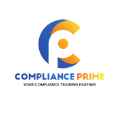Every house provides more than just shelter, it provides safety and comfort, and it’s these elements that truly make a house a home. Whether a home is owned or rented, residents expect it to be a safe place to live. For homeowners, safety measures are often implemented directly by them, they install smoke alarms, secure windows, or reinforce doors to protect themselves and their loved ones.
For tenants in rental properties, however, the ability to make major safety improvements is limited. Ensuring that these homes are safe is therefore the responsibility of landlords and property managers. Seasonal and environmental hazards, whether natural or manmade, can become dangerous if preventive measures are ignored. From winter snow and ice to flooding and carbon monoxide exposure, taking proactive steps is essential.



The Importance of Safety Rules
Safety rules in rental properties exist to protect lives, reduce risk, and prevent property damage. They are not optional; they are legally and ethically important for landlords and property managers. Failing to implement proper safety measures can not only harm tenants but also lead to legal liability, costly repairs, and reputational damage.
Key safety rules involve anticipating seasonal risks, understanding potential hazards, and maintaining essential safety equipment. For example, winter brings risks like ice accumulation and heating failures, while spring may bring flooding concerns. Landlords need to assess and act on these hazards before they escalate.
Safety Rules Landlords Can’t Ignore
Here are some critical safety measures every landlord or property manager must prioritize:
1. Smoke Alarms
Smoke alarms are the first line of defense against fire. Landlords must ensure alarms are installed on every floor, regularly tested, and replaced according to manufacturer guidelines. Working smoke alarms save lives and are legally required in most states. Ignoring smoke alarm maintenance can lead to severe consequences in case of fire, both for tenants and the landlord.
2. Carbon Monoxide Detectors
Carbon monoxide (CO) is a colorless, odorless gas that can be deadly. Detecting CO early is essential, especially in homes with gas appliances, fireplaces, or furnaces. Landlords must install detectors in key areas, replace batteries regularly, and educate tenants about the signs of CO exposure. Failure to provide functioning CO detectors can result in serious health risks and legal liability.
3. Flood Drains and Water Management
Proper drainage and flood prevention measures protect both the property and tenants. Landlords must maintain gutters, clear debris from drains, and inspect basements or low-lying areas for water damage. Seasonal storms or melting snow can quickly cause flooding, leading to property damage, mold growth, and unsafe living conditions. Ignoring these precautions can make a preventable disaster worse.
4. Snow and Ice
During winter, snow and ice accumulation creates serious slip-and-fall hazards on sidewalks, driveways, and entryways. Ice dams on roofs can lead to water leaks and structural damage, while frozen pipes can disrupt water supply. Landlords must ensure regular snow removal, inspect roofs and gutters, and maintain heating systems to prevent these winter hazards.
5. Animal and Pest Intrusions
Seasonal changes often drive animals and pests into properties seeking shelter or food. Rodents, raccoons, and insects can carry diseases and cause property damage. Landlords should seal entry points, schedule inspections, and promptly address any infestations to protect tenants, particularly during spring and fall when pest activity peaks.
These rules are not optional, they are a landlord’s responsibility and a tenant’s right to safety. Following them reduces risk, ensures compliance with laws, and creates a safer, more comfortable living environment.
Learning and Compliance with Compliance Prime
Property managers and landlords can benefit significantly from professional education. At Compliance Prime, we offer informative webinars on fair housing rules and regulations, covering multiple topics from property safety to affordable housing management. These sessions help landlords and property managers stay up to date with legal requirements, ensure proper property management, and implement best practices in tenant safety. By participating, professionals can confidently manage properties, comply with regulations, and reduce liability risks.
Conclusion
A home is not truly a home without safety and comfort. For landlords and property managers, this means prioritizing seasonal safety rules, from smoke alarms and carbon monoxide detectors to flood drains and winter hazards. Ignoring these responsibilities puts tenants at risk and exposes landlords to legal and financial consequences.
By staying informed and proactive, landlords can maintain safe, compliant, and well-managed properties. Educational resources like Compliance Prime webinars provide the tools and knowledge needed to navigate regulations, implement safety measures effectively, and ensure tenants enjoy a secure living environment. Safety is not just a requirement, it’s a responsibility that protects lives, property, and reputation.


